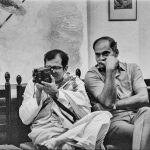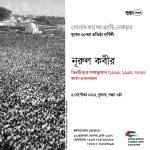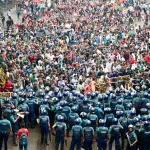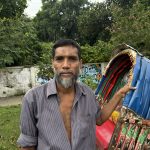

-
ROMEL CHAKMA II: Is custodial killing heroic?
by rahnuma ahmed Official versions conflict about why Romel Chakma…
-
-
-
-
-
-
Rare and Unseen photographs of Bangabandhu Sheikh Mujibur Rahman from the Drik archives
A self-taught photographer with a strong sense of humour Rashid Talukder received…
-
Protecting Freedom of Expression in Bangladesh
Following is the English translation of the statement made by…
-
Tolerating Death in a Culture of Intolerance
Another blogger. Ananta Bijoy Das, murdered today. Police too busy…
-
-
-
The Blood Telegram: Nixon, Kissinger and a Forgotten Genocide.
?By Gary Bass. The Economist UNTIL 1971 Pakistan was made…
-
-
-
The anomaly of a secular Bangladesh
Sheikh Hasina should draw a veil over the nation’s blood-soaked…
-
What Pakistan left behind
By Salil Tripathi: Newsweek ??Shahidul Alam/Drik/Majority World for Newsweek Old…
-
-
-
-
-
Shahidul Alam: Interview on BBC Asia News Network
Interview on 22nd February 2013, where he talks about the…
-
-
Bangladesh: The ghosts of 1971
The country’s independence war created divisions that persist to this…
Latest Posts
Categories
- 1971
- Afghanistan
- Arts
- Bangladesh
- Capitalism
- Caretaker government
- Censorship
- China
- Chittagong Hill Tracts
- Chobi Mela
- Chobi Mela VII
- Coal
- Colonialism
- Consortium government
- Corruption
- COVID 19
- Crossfire
- culture
- Current News Photos
- Democracy
- development
- Disappearances
- disasters
- Drik and its initiatives
- Drik DNA
- Drik's Network Partners
- Drugs
- economy
- Education
- Elections
- Energy
- environment
- exploitation
- features
- Film
- Garments
- Gas
- Gender
- Genocide
- Global Issues
- Governance
- guimet
- Health
- History
- Human rights
- Humour
- Immigration
- Imperialism
- India
- Interesting sites
- Interviews
- Interviews and Features
- Islam
- Kalpana Chakma
- Killings
- Law
- lectures
- literature
- Major Features on Bangladesh
- Majority World
- media
- Media issues
- Migration
- Military
- mining
- Mir Jafar
- Monarchy
- Music
- My Photo Essays
- Nepal
- New Age
- New Media
- News Archives
- News Photo Archives
- Nuclear
- Occupation
- Oil
- Pakistan
- Partition
- Pathshala
- People
- Personal
- Photography
- Photojournalism
- Photojournalism issues
- photojournalist
- politics
- Poverty
- RAB
- Rahnuma Ahmed
- Religion
- Resistance
- Reviews
- Science
- security
- Shahidul Alam
- Sheikh Hasina
- short stories
- Sites of Drik and Pathshala photographers
- South Asia
- Southern Exposure
- Sports
- Sri Lanka
- surveillance
- Taliban
- Technology
- Terrorism
- Transport
- UK
- Uncategorized
- USA
- Violence
- War
- war on terror
- Water
- World
Tags
1971 Art Arts Bangladesh book censorship Chobi Mela Chobi Mela VII culture Death democracy Dhaka Drik education Elections exhibition Festival garments Gaza Genocide Governance history Human rights India Israel Journalism Law literature Majority World media Military Pakistan Palestine Pathshala Photography Photojournalism politics Rahnuma Ahmed resistance Shahidul Alam USA Violence Visual Arts War War Crimes



